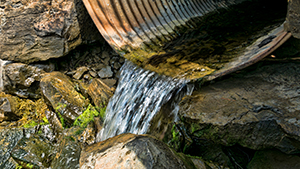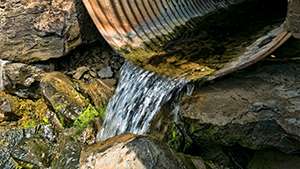
The Role of the USDA:
The U.S. Department of Agriculture (USDA) is a cabinet-level agency that oversees the American farming industry. USDA duties range from helping farmers with price support subsidies, to inspecting food to ensure the safety of the American public.
The Role of the NRCS:
The Natural Resources Conservation Service (NRCS), formerly known as the Soil Conservation Service (SCS), is an agency of the United States Department of Agriculture (USDA) that provides technical assistance to farmers and other private landowners and managers.
The Role of the Technical Service Provider or TSP:
Technical Service Providers (TSPs) are individuals or businesses that have technical expertise in conservation planning and design for a variety of conservation activities. TSPs are hired by farmers, ranchers, private businesses, nonprofit organizations, or public agencies to provide these services on behalf of the Natural Resources Conservation Service (NRCS). Each certified TSP is listed on the NRCS TSP online registry, TechReg. The TSP registration and approval process involves required training and verification of essential education, knowledge, skills and abilities.
What is the Purpose of the EQIP Programs?
EQIP is an acronym for Environmental Quality Improvement Program. Via these programs agricultural producers are provided financial and technical assistance to in order to address natural resource concerns and deliver environmental benefits such as improved water and air quality, conserved ground and surface water, reduced soil erosion and sedimentation or improved or created wildlife habitat.
Relationship of TSP and Irrigation Water Management Plan portion of EQIP:
In 2013, the South Carolina NRCS mandated that Irrigators that were applying for EQIP Funds must also provide NRCS an Irrigation Water Management Plan (IWMP) prepared by a TSP to qualify for funding. Prior to 2013 and with just a few documents, irrigation plans and water management plans could be generated by a Professional Engineer (PE) or an Irrigation Association (IA) Certified Irrigation Designer (CID). Today’s IWMP is a much more comprehensive document including examining many facets of the irrigation design and water management process.
A partial list of elements to be included in the plan is as follows:
1. Identify the Resource to be Managed and Conservation Practice to be applied using good Economic Practices and Management Schemes.
2. Crop Type & Rotation
3. Maps of Field & Water Delivery System including Emission Devices.
4. Documentation of Past and expected Future withdrawals of Water.
5. Volumes of water to be applied over the growing Season
6. Soil Test for nutrient Levels, Soil Type and description of Soil Horizons
7. Test water for Irrigation Suitability including P, K, Ca, Mg, Na, Fe, Cu, B, Cl, EC, Sulfate, Nitrate-Nitrogen, pH, Carbonate, TDS and SAR.
8. Estimates of Distribution Uniformity of irrigation System
9. Develop an Irrigation Schedule – When to Irrigate & how much to Irrigate based on existing level of soil moisture.
10. Develop an Operation & Maintenance Manual for the Irrigation System.
If you’re interested in developing a water management plan for your farm, contact WP Law today and ask about better water management systems!









